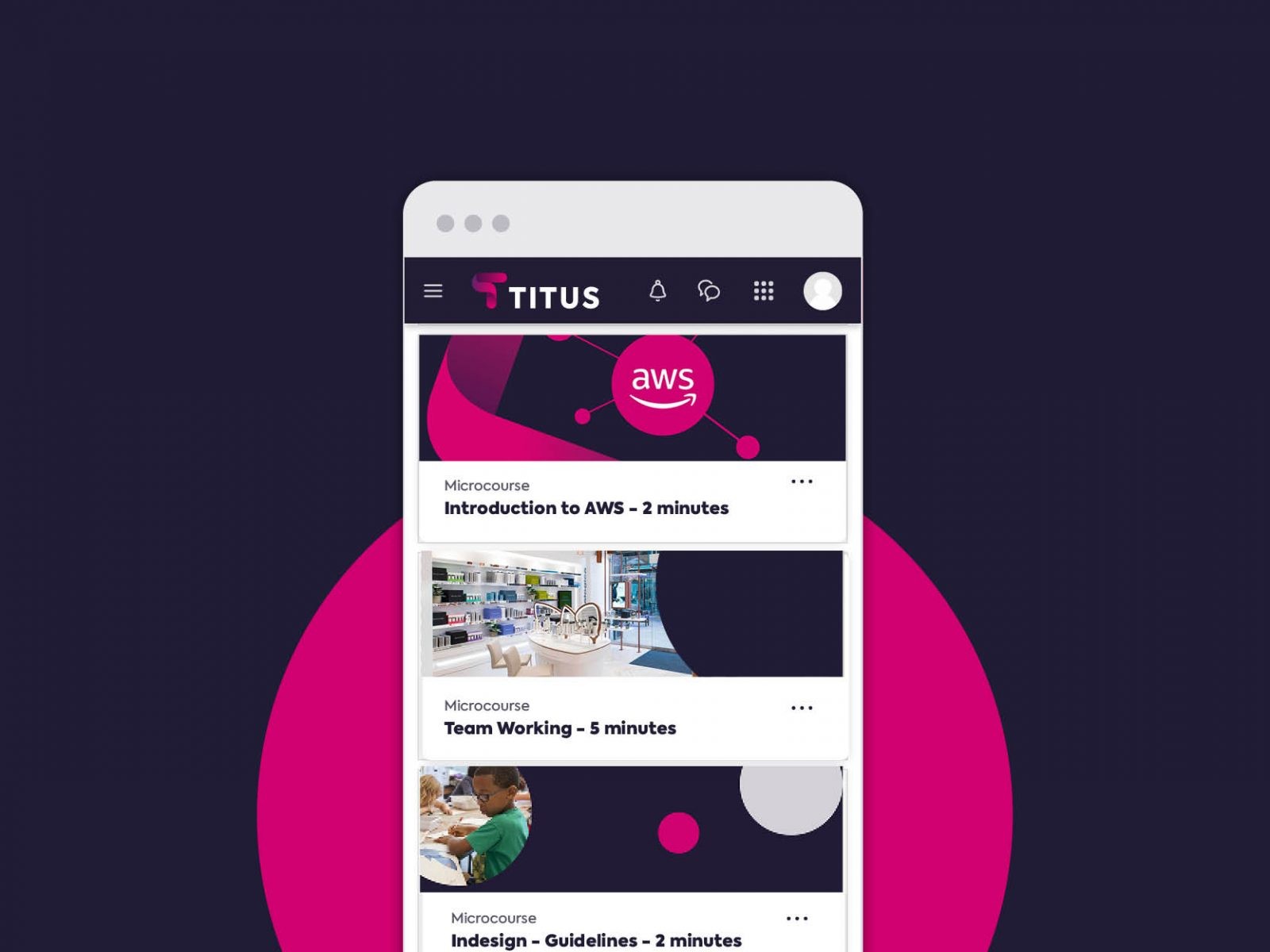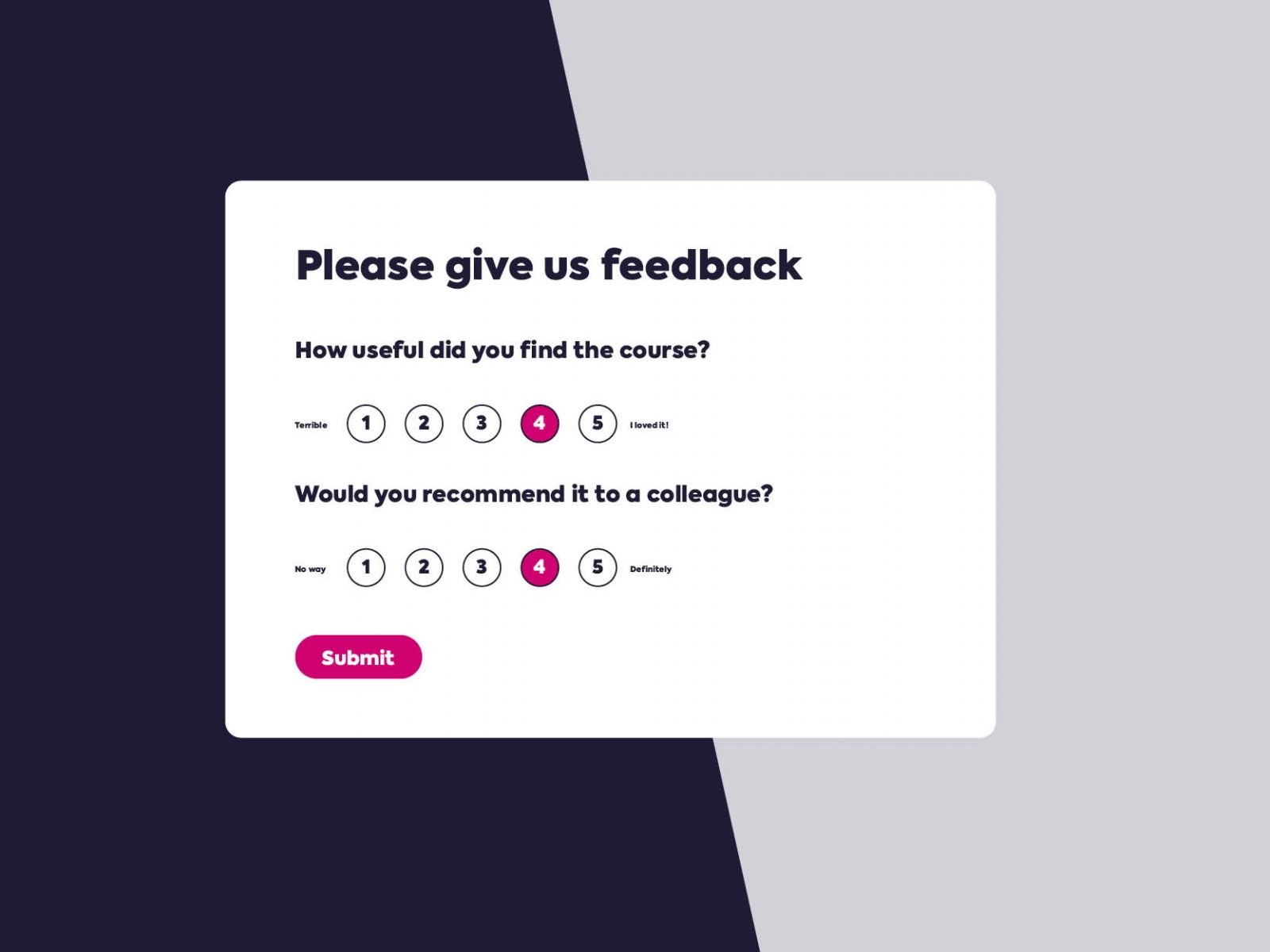- Home
- Our Solutions
Titus Services
Unlock Moodle's Potential with Titus
Migrate to Titus and transform how you use Moodle in your organisation. - Industries
- Our Work
- About
- Blog


Thinking of the learning process in terms of a cycle, or loop is a concept that has been around for some time now. Originally pioneered in the education sector, it’s now gaining popularity in workplace learning scenarios, across a wide range of industries and sectors.
Essentially, the key idea is that learning is not a linear process, but a loop, in which a circular path is followed which allows learners and management to continually evaluate, assess and improve how training and learning are done over time.
In this article, we’ll look at one widely used definition of the learning loop (there are a few variations out there, but this one has all the basic elements in place), the different activities which take place at each stage and the benefits to L&D departments and workplace learners themselves. First, let’s define what we mean by the “learning loop”.
That’s not to say there’s no overlap. Public sector organisations face increasing pressure to compete with the private sector in order to attract the best talent, while at the same time dealing with dwindling budgets. They need to meet the expectations of a new generation of potential candidates, without spending excessively on infrastructure, licensing or services contracts.
For organisations in this position, Moodle Workplace is an ideal tool. It has an up-to-date feature set, integrates readily with existing tools and systems, is highly customisable and configurable and represents excellent value for money.
We’ve looked at some key areas of functionality that are of specific importance when choosing the right LMS for government departments or agencies, and the specific features within Moodle Workplace which address each of these needs.
The four key elements, or stages, of the learning loop are:
Let’s have a look at each of these stages in greater detail.
01 – Learning

The first stage is gaining new knowledge through learning. In some older models, this stage has been referred to as the “instruction” phase, but that’s an increasingly outdated idea, as it fails to take into account the opportunities for learning outside of the traditional tutor-learner relationship.
In today’s workplace, learning can happen in a range of settings, from formal to informal, either in planned sessions or bite-size chunks, as a separate activity, or built into workflows. In our experience, the most common learning scenarios are as follows:
Instructor-led learning
This is probably the first type of learning which comes to mind when we talk about workplace learning. Traditionally, employees would be sent on a course to address a specific aspect of their job, health and safety training, operating machinery, learning a programming language, etc. Courses usually followed a one-to-many structure, delivered in person, and with minimal follow-up or opportunities for feedback and discussion.
Today there’s a lot more flexibility when it comes to instructor-led learning, with the introduction of learning management systems, videoconferencing tools and blended learning programmes allowing for a much richer and more interactive experience, where learning can be evaluated, assessed and reported on in greater depth. The role of the course leader has shifted from instructor to facilitator, with greater emphasis on two-way communication.
Independent learning
A significant proportion of learning is done individually, with employees taking control of their own development by reading, watching or listening to relevant resources to enable them to learn new skills and advance their careers. This can involve both formal and informal learning—companies may suggest or supply useful materials for independent study, but individual employees may also pursue their own research.
Learning management systems can support effective independent learning by providing a hub for content and resources which are curated by the learning and development team, perhaps with suggested links to direct employees who want to research further into a specific topic.
Well designed learning platforms allow learners to study at their own pace, log in from mobile devices as well as their office PC, and fit their independent learning around their other responsibilities and commitments.
Workflow-based learning
Learning “on the job” has long been a feature of many workplaces, with companies taking the view that the best way to learn is through practice. While this style of learning isn’t suitable for all roles, topics or indeed individuals, in many cases this type of immersive learning improves engagement and retention by allowing employees to directly relate the theory they’re learning to its practical application in their day to day work.
Technology has opened the door to more effective real-time learning by allowing employees to access resources and support materials on the go. Termed “just-in-time” learning, or microlearning, this involves making task-specific content available through a learning platform or web interface which learners can locate and consume at the time they are working on that specific task.
For example, a new starter restocking a retail location for the first time can use their smartphone to pull up an instruction video on safe manual handling or correct use of product codes, to ensure they’re on the right track.
Peer-to-peer learning
Pre-internet, peer-based learning was essentially limited to learning from other employees in the immediate team or department. Mentoring of new staff by more experienced colleagues was common, as was encouraging team members to help new starters by “showing them the ropes”. Tracking and reporting were often done by checklist, with few opportunities to circle back and reflect on specific items once they had been completed.
Now, workplaces across all sectors are realising the value of enhanced collaborative learning, using tools including instant messaging, video calling and learning platforms to enable more frequent and wider conversations between employees.
Tools such as company message boards or forums, social media groups and interdepartmental idea-sharing sessions allow businesses to make the most of their human capital, swapping best practices, planning innovative ways of working and discovering new approaches to problems.
02 – Application

Once the initial learning has been completed, it’s time for learners to demonstrate their new knowledge—either in the form of an assessment or by applying it in their day-to-day role. Managing the application phase is important—employees may need support in getting started with a new role, or in the case of formal exams, adjustments to their schedule to allow for revision and preparation.
Assessment
Assessments can take a variety of forms, from short quizzes to confirm that the learner has understood the basics of a course, to the in-depth examinations required to achieve professional qualifications. In some roles, employees may be required to pass an assessment before being able to carry out aspects of their role—for example demonstrating they have understood safety training before working in a hazardous environment, or gaining the relevant certification to ensure compliance with financial or legal regulations.
Nowadays most assessments are done online, often via an LMS, which allows for centralised grading and publication of results. Most learning platforms will integrate with HR systems to update employee profiles once a test or exam has been passed, and to record the relevant qualification or certification.
Implementation
Sometimes a formal assessment may not be necessary, and learners will be expected to simply apply their newly learned knowledge or skills to their job. Learning management systems come in handy here too, especially as a repository for resources and microlearning activities, as discussed above, which as well as being helpful for on the job learning are a useful reminder when it comes to applying the knowledge learned.
Learners can quickly check back over courses or activities they have completed, signing in with a mobile device to confirm or double-check policies, processes, manuals or any other task-specific information to ensure they’re applying the knowledge correctly. Although this may seem like an easy way around remembering the material by heart, it’s actually an effective way to reinforce learning and improve information retention—and avoids any errors.
Collaboration
Another way in which employees can apply their new knowledge is by sharing it with colleagues or team members. There are a number of scenarios where this might occur, for example, managers receiving training on new processes or policies which they are then required to disseminate to their direct reports, or individual employees completing a specialist course to become a subject matter expert, and then helping to train junior members in related roles.
03 – Feedback

Receiving timely and accurate feedback is a key part of the learning process, allowing learners to understand how well they have progressed and identify any areas for improvement. Feedback sessions, whether delivered in person or online via a learning management system, should be both regular and frequent—allowing learners to act on any suggestions or guidance before reaching the end of a course.
Holding off on giving feedback until the end of a long programme of training is less productive, as it doesn’t allow for ongoing improvements to be made or support to be offered during the learning phase. Learning management systems are particularly effective in this regard, allowing immediate automated feedback for simple activities such as quizzes, as well as providing multiple channels for course leaders to communicate more detailed feedback on complex tasks.
Feedback from management
For the majority of workplace learners, their primary source of feedback on learning and applying new knowledge will come from their manager, or from dedicated L&D staff, who have overseen their learning journey. This may be in the form of direct comments or grades on the results of an online assessment or assignment or could be qualitative feedback on how well they are applying the new concepts they have learned in their role.
It’s important that managers track learner progress through the course rather than waiting until the end to provide their feedback. Most modern learning management systems include customised reporting tools or dashboards which allow course leaders to view learner progress in real-time and identify any individuals who might be having trouble with a particular topic, allowing them to offer targeted support during the learning and application phases.
Feedback from peers
Peer feedback is another valuable part of the learning process, and using a buddy or mentor system where employees assess how well their colleagues are learning and applying new skills is an increasingly common practice. Peer-to-peer feedback, while often less formal and structured than that offered by managers, has the advantage of being more immediate and direct, allowing learners to adapt the way they apply their knowledge or skills within the normal flow of work.
For organisations using a learning management system, the communication tools available allow peer review of online assessments, activities, or group projects which can even extend to grading, content or resource creation and course design. Giving learners the freedom to review and critique one another’s work can help foster a spirit of collaboration as well as motivating and engaging individual learners in their own learning journey.
Third-party feedback
Feedback isn’t only internal. Most employees will receive some level of feedback on their work from third parties—whether that’s customers, partners or different departments within an organisation. Learners should collate and store any comments or testimonials received which relate to their learning and how they have applied the new knowledge to their work, as it can provide useful additional evidence to be discussed during the reflection phase, as well as during periodic learning or performance reviews.
04 – Reflection
The final stage of the process, before cycling round to the next item or period of learning, is reflecting on the learning, application and feedback which has just been completed. The idea is to assess what went well and what didn’t and use this information to improve the learning journey going forwards. Reflection should be a two-sided process, with both learners and managers or course leaders taking the time to evaluate and critique their performance.
Reflection can be formal or informal, as we’ll explore below, but what is crucial is that the outcomes and lessons learned are documented and stored, for example in the LMS, so they can be referred back to when planning the next phase.
Informal vs formal reflection
In smaller organisations or teams, this process may simply take the form of a group conversation or individual interview at the end of the feedback process where learners can discuss their experience with trainers or course leaders, highlight any areas of difficulty and note down suggestions as to how the course or module could be improved for future cohorts.
Larger organisations may choose to formalise this process, by using standardised questionnaires to prompt learners to reflect on and record their thoughts about different aspects of the course. The same system can be used for trainers themselves, and the results collated to provide guidance for future improvements to the course.
An increasingly popular activity in the reflection phase is to encourage learners to build their own e-portfolio, which forms an online collection of evidence of learning, along with their thoughts on the process. Most learning management systems will have a plugin or integration which allows learners to create such a portfolio within the platform and will allow them to export the data in a transferable format if they move on to a different company in future.
05 – Back to the start
With the reflection phase complete, the cycle continues with the next learning objective—remembering to apply any updates or changes to the process identified during the learning loop to ensure continuous improvement.
If your organisation is looking for advice on how you can implement continuous improvement in the learning loop, and in particular how best to use an LMS to facilitate this, speak to one of our expert team to explore the available options.
Get in touch
Overall, Moodle Workplace offers a comprehensive and fully featured e-learning solution that addresses the specific needs of government and other public sector organisations. It combines flexibility with security to deliver an engaging and effective platform for all types of training and development.
For further information on how Titus supports public sector bodies in delivering effective, engaging and secure e-learning, speak to one of our team.

Privacy Policy | Cookie Policy | Data Protection Policy | Equality, Diversity and Inclusion Policy
© 2023 Titus Learning LTD | Company Number 08799881 | VAT Number 1813 09027
Super talented, unflappable and very funny, Phuong supports the whole marketing team in her role as Digital Marketing Executive. Phuong holds a bachelor’s degree in Business Administration and recently completed a master’s degree in Management and Marketing. Originally from Hanoi in Vietnam, Phuong is now based in the UK and climatising brilliantly to our weather and food.
Phuong owns a food review Instagram page as travelling and food are her passion. She also has a cute little french bulldog.
Ellie was the first woman to join Titus and has paved the way for many more since then. After studying for a degree in Fashion and Marketing, Ellie was lucky to find herself at fashion weeks and photoshoots.
Now she’s switched from talk of the front row to front end design and has brought loads of transferable knowledge to Titus. Ellie has also found a real passion for tech, especially in the learning sector, helping clients create positive change for their organisations.
As one of the youngest people at Titus but at the same time one of the oldest serving members of the team, Callum has graced Titus with his broad smile and positive attitude for over 5 years now. As a key member of the marketing team, Callum works across all areas, both on and offline, to ensure that all Titus brands and communication are on point.
After missing out on the opportunity to go to University the first time around, management encouraged him to enrol in our course alongside his work. He is now studying to achieve his Level 6 Diploma in Professional Digital Marketing.
Always bringing innovation and new ideas, Dec studied a degree in Journalism but found his passion in digital marketing. Dec has also worked in marketing for one of the countries biggest retailers and within the property sector.
Outside work, Dec Co-founded a news publication where he collaborated with global brands like Uber, Amazon, BooHoo and countless SMEs.